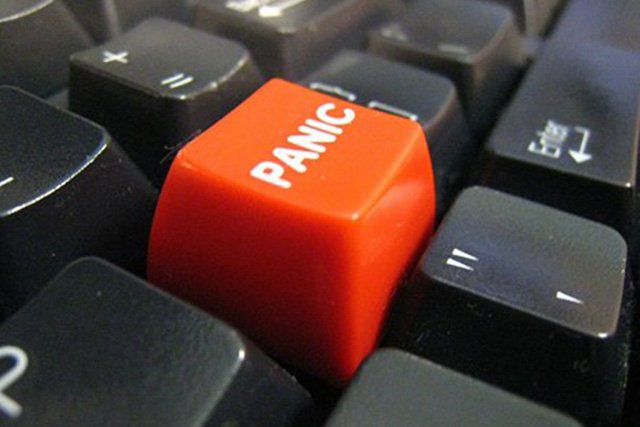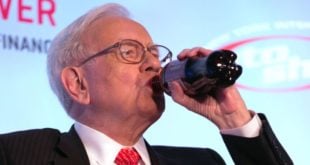For those that can recall, when Steve Jobs went back to Apple, he did so as “an advisor.” For years he said it was only a temporary role, for reasons unbeknownst to me. As a point in fact, he was actively trying to find a new chief for Apple, one that would’ve changed the course of time, for the worse.
Naturally, no one believed Steve could turn AAPL around, since he failed once before.
Jobs Is Said to Have Found the Executive Apple of His Eye
Steven P. Jobs, who stepped up his role as an adviser at Apple Computer three weeks ago, has been trying — unsuccessfully so far — to persuade Eastman Kodak’s chief executive, George M. C. Fisher, to come to Apple, according to an executive who knows both men.
As recently as two weeks ago Mr. Fisher said publicly that he had no desire to leave Kodak, after reports that he had been approached about the possibility of taking the top spot at AT&T.
However, Mr. Jobs and Mr. Fisher have had a long and friendly relationship, and when Mr. Fisher was at Motorola Inc., that company came close to making a major investment in Mr. Jobs’s software company, Next Inc.
Neither Mr. Fisher nor Mr. Jobs would comment.
But Mr. Jobs, a co-founder of Apple who was later ousted from the company, once successfully wooed an initially skeptical John Sculley away from the larger Pepsico to lead Apple. Mr. Jobs reportedly asked Mr. Sculley, who in the meantime has left Apple, whether he wanted to ”sell sugar water” for the rest of his life.
Apple recently retained the executive search firm of Heidrick & Struggles to look for a new chief executive. However, Mr. Jobs has rapidly and visibly put his imprint back on Apple, and even without a formal position appears to be, in effect, leading the company after the recent ouster of Gilbert F. Amelio. As such, Mr. Jobs is deeply involved in the search for a new chief executive.
Mr. Jobs is reportedly also attempting to recruit former board members of Apple and Next Inc., including a friend, Larry Ellison, the chairman of Oracle; John Warnock, chairman of the Adobe Corporation, and Daniel Case, an investment banker at Hambrecht & Quist, to fill open positions on the Apple board.
Mr. Jobs has privately told friends and associates that he does not want to be Apple’s chairman or chief executive. However, while a chief executive search is under way, he has pushed the computer maker swiftly toward a strategy that he believes will allow the company to revive itself in a computer industry dominated by machines based on Microsoft software and Intel chips.
The change in Apple’s direction apparently includes a dramatic rollback of the company’s willingness to license the Macintosh operating system. Apple’s board told executives at several companies earlier this week that licensing the operating system was ”no longer consistent” with Apple’s strategy, according to officials at two companies that have licensing agreements with Apple.
So far, on the inside at least, Mr. Jobs has had a positive impact, according to current and former Apple employees.
”Marketing has been galvanized in a way they haven’t been for many, many years,” said one former Apple employee who stays in close contact with the company.
The new attitude at Apple is evident to those who have visited the company in recent days, particularly when compared with the malaise that the company had fallen into under Mr. Amelio.
”There is an incredibly high level of energy on the Apple campus compared to four weeks ago,” said Richard Doherty, a computer industry consultant at Envisioneering, a consulting firm in Seaford, N.Y. ”Everybody is really charged up, and it’s all because of Steve Jobs’s new role.”
At the heart of the new Apple strategy is a narrowing of the company’s focus on the education and publishing markets. However, Mr. Jobs has also directed Apple’s hardware designers on a crash program to develop a ”network computer” — an idea championed by both Mr. Ellison and Sun Microsystems Inc.’s chairman, Scott G. McNealy, for a relatively low-cost computer that provides Internet access and other basic capabilities. But unlike others, the Apple network computer is to be based on Macintosh technology and aimed at the home and education markets.
Mr. Jobs has reportedly told Apple employees that he wants to work closely with the company’s tiny server business, which develops larger machines that store and distribute information. Though it provides almost no revenues to the company now, if it is linked to a network computer strategy, the server business could conceivably blossom when joined to inexpensive machines, said a person who has discussed the strategy with Apple managers.
In one sense the new strategy is a return to Mr. Jobs’s roots. The first version of the Macintosh, which was intended to simplify personal computing, was described as resembling an ”appliance” at the time. People who have seen early design prototypes of Apple’s network computer have said that they are also remarkably flashy.
Mr. Jobs will have a coming-out party at the Macworld computer exhibition in Boston next week. The event could provide Mr. Jobs, who will give a speech, an opportunity to restore some momentum to the computer maker, which has in the last two years been in what has widely become perceived as a death spiral in the computer industry.
To help introduce his new strategy, Mr. Jobs has retained Tom Suiter of CKS Interactive, a multimedia advertising firm based on the West Coast that was founded by a group of Apple Computer veterans from the early days of the company. Mr. Suiter was Apple’s first creative director.
Mr. Jobs’s rapid push to revamp Apple may actually make it more difficult to find a high-profile chief executive who would be forced to come in and execute a strategy that was already in place.
However, Mr. Jobs has made it clear to a number of people that his plans call for only a short-term rescue effort.
”I think that Steve would love to be in an ambassadorial role in the long run,” said Jeffrey Sonnenfeld, a professor at the Emory University School of Business in Atlanta.
Adjusted for dividends and splits, AAPL was trading around $5.50 at the time this article was published.
Here is Steve Jobs’ return to Macworld.






Iphone 5c= Iphone 5crocs.
BV im back in it Friday
I hope you make a similar post about ONVO in 10 years when we’re all up millions. Top hats, cigar pipes, and canes.
There are a couple of matters that I recall from the .com bubble.
One was that in the premarket stocks like QCOM were adding 15-20 points at a time and timing as a trader was everything (also true today but there wasn’t much chance to get in unless one was swing trading).
It was easy to make $$ when a high flying momo stock would announce a secondary or some bad news. Just keep buying more as it declined because it would ultimately rebound big.
I specifically remember doing this on VRTS (Veritas Software) and DITC (Ditech Networks). DITC announced a secondary during the day and the stock went from 165 down to 90 in a heartbeat and I started buying all the way down. It ended the day at about 165 again.
Apple was the exception to the rule.